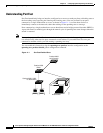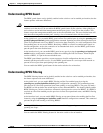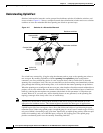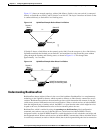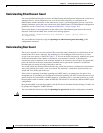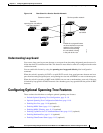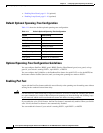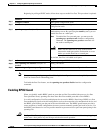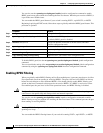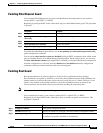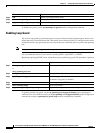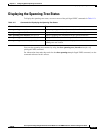
11-10
Cisco Systems Intelligent Gigabit Ethernet Switch Modules for the IBM BladeCenter, Software Configuration Guide
24R9746
Chapter 11 Configuring Optional Spanning-Tree Features
Configuring Optional Spanning-Tree Features
• Enabling Root Guard, page 11-15 (optional)
• Enabling Loop Guard, page 11-16 (optional)
Default Optional Spanning-Tree Configuration
Table 11-1 shows the default optional spanning-tree configuration.
Optional Spanning-Tree Configuration Guidelines
You can configure PortFast, BPDU guard, BPDU filtering, EtherChannel guard, root guard, or loop
guard if your switch is running PVST+, rapid PVST+, or MSTP.
You can configure the UplinkFast or the BackboneFast feature for rapid PVST+ or for the MSTP, but
the feature remains disabled (inactive) until you change the spanning-tree mode to PVST+.
Enabling Port Fast
A port with the Port Fast feature enabled is moved directly to the spanning-tree forwarding state without
waiting for the standard forward-time delay.
Caution Use Port Fast only when connecting a single end station to an access or trunk port. Enabling this feature
on a port connected to a switch or hub could prevent spanning tree from detecting and disabling loops
in your network, which could cause broadcast storms and address-learning problems.
If you enable the voice VLAN feature, the Port Fast feature is automatically enabled. When you disable
voice VLAN, the Port Fast feature is not automatically disabled.
You can enable this feature if your switch is running PVST+, rapid PVST+, or MSTP.
Table 11-1 Default Optional Spanning-Tree Configuration
Feature Default Setting
BPDU guard Disabled.
BPDU filtering Enabled.
Port Fast Enabled.
UplinkFast Globally disabled.
BackboneFast Globally disabled.
EtherChannel guard Globally enabled.
Root guard Disabled on all interfaces.
Loop guard Disabled on all interfaces.



